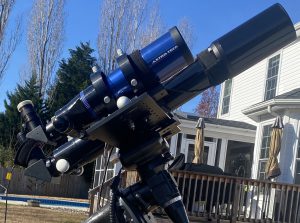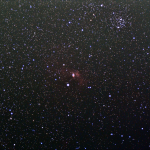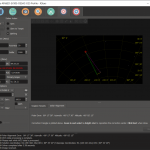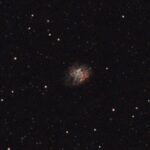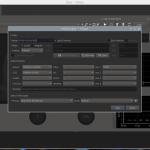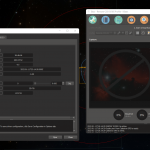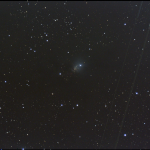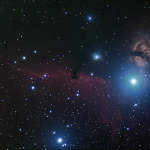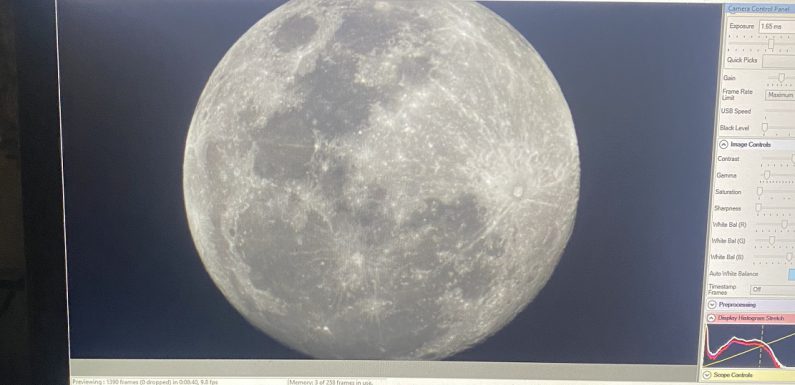
Something new in Amateur Astronomy which has sparked my interest is Electronically Assisted Astronomy (EAA). Electronically Assisted Astronomy (EAA) is observational astronomy with a telescope which uses a camera instead of an eyepiece. EAA and Astrophotography are similar in that a camera replaces the eyepiece but the practice is very different.
A lot of the work in astrophotography is done after capturing the images, you are taking many long exposures (subs of 1 minute, 5 minutes, 15 minutes, or more) to get hours of data, then stacking them, and then processing them after the fact to get the final detailed image. The final image is not realized until after many hours of stacking and post-processing.
With EAA, as with astrophotography, you are replacing the eyepiece with a camera, you are then using software to live stack shorter exposures (seconds instead of minutes) to bring out detail and color you may not normally see through the eyepiece. The images the camera captures are stacked and you view the images and make tweaks to the settings (gain, color, contrast, balance, histogram, etc) using software in real time.
Viewing and processing live, in real time, to get a detailed image you can see on a screen almost immediately is the primary difference (as I see it) between EAA and astrophotography. The shorter exposures also mean there is less dependency on the alignment of your equipment and the quality of your skies (light pollution, etc).
EAA is also considerably less expensive to get started in. Even lower end DSO Cameras used for Astrophotography can cost many hundreds of dollars (even thousands). DSO cameras, and even DSLRs, can also be used for EAA but I picked up this inexpensive, less $150, CMOS camera, the SVBONY SV305, to start exploring the art of EAA.
This little camera is pretty impressive, especially for the cost. I chose the SVBONY SV305 for the cost and some of the results I had seen from others in the CloudyNight’s forums and at the Stargazers Lounge.
Replaced the diagonal in the AT66ED scope with the SV305 and tested the focus on some trees across the way.
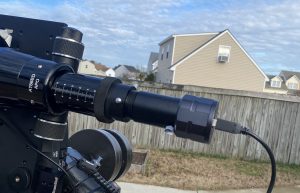
I did have to use a 2″ extender to get enough back focus but the images of the tree limbs are nice and sharp, I was able to count what is left of the leaves. Why am I setting this up in the daytime and pointing it a trees in the distance, well it’s a lot easier to get a feel for the equipment when you can see. 🙂 I have my Stellarvue 80mm scope mounted beside the AT66 so I can also observe through an eyepiece.
The software I am using is SharpCap. I have it installed on an old Windows 10 Laptop. I am also messing with AstroDMx and will likely look at eventually moving the camera control from the laptop to a purpose built Raspberry Pi. AstroDMx supports the Raspberry Pi and SharpCap only runs on Windows.
Messed around with it in the daylight pointing a tree limbs and radio towers in the distance. Pretty easy to use and the images on the screen were great. Now to wait till it is dark to see what this thing can really do.
One of the only things I like (and also one of the things I hate) is that it gets dark pretty early. This is great when you want to observe on a school (work) night. Below is the a picture of my laptop screen of a Live View of the Moon just after sunset in SharpCap doing 1.8 ms exposures (not stacked) with out much tweaking (really just the Auto White Balance).
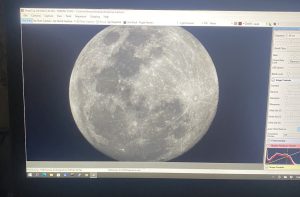
Unfortunately the clouds moved in early and the Moon was pretty much the only object I was able to observe with the camera. I chased holes in the clouds for a bit, but gave up early. Still really happy with the first results. The detail is great and it is easy to see features on the Moon’s surface.
It is cloudy, wet, and windy right now, but the weather is suppose to clear in the next day or so.
For some more info on EAA check out this great presentation by Robbin Jones from the Astronomy Club of Tulsa sharing how he uses EAA.
There is much more to come on my EAA journey and adventures for sure. As much as I enjoy observing through the eyepiece I really like tinkering with things. Most of what I enjoyed when imaging in the past was getting things to work, learning the tweaks and the process, experimenting with how to get the best out of my gear. Looking forward to learning and doing and seeing what kind of results I can get on some Deep Space Objects with EAA.
It will be neat to be able to easily share the views with my grandkids…


